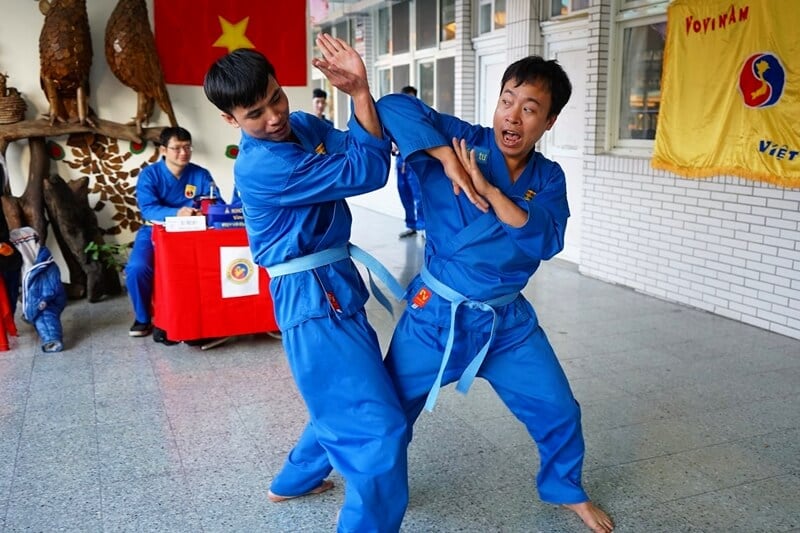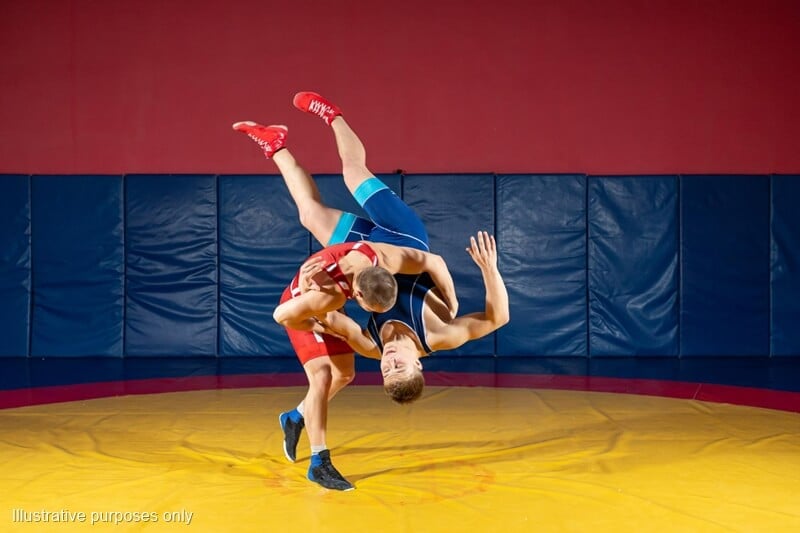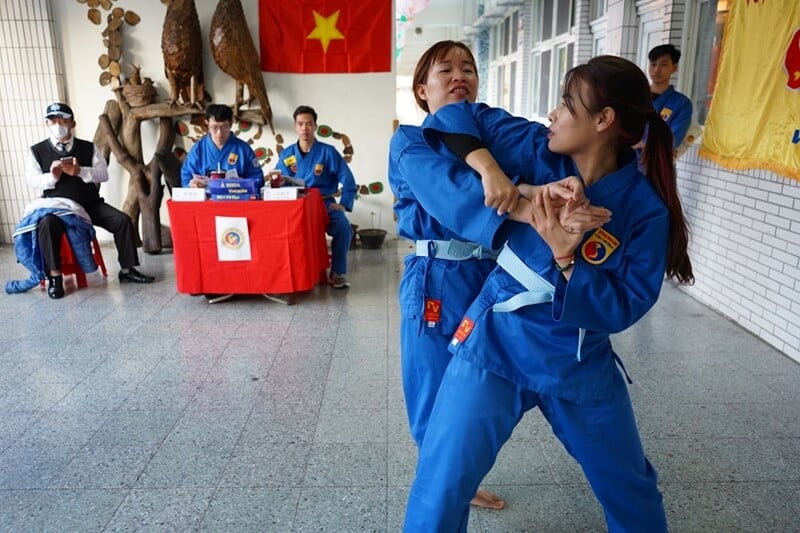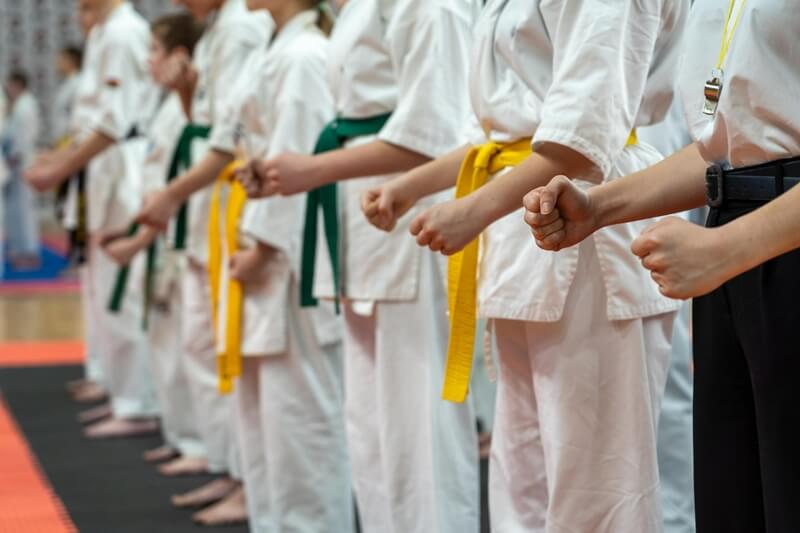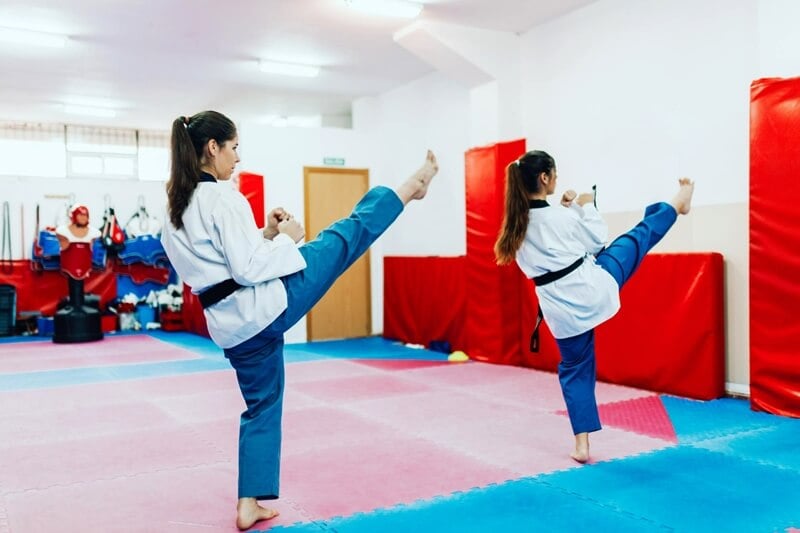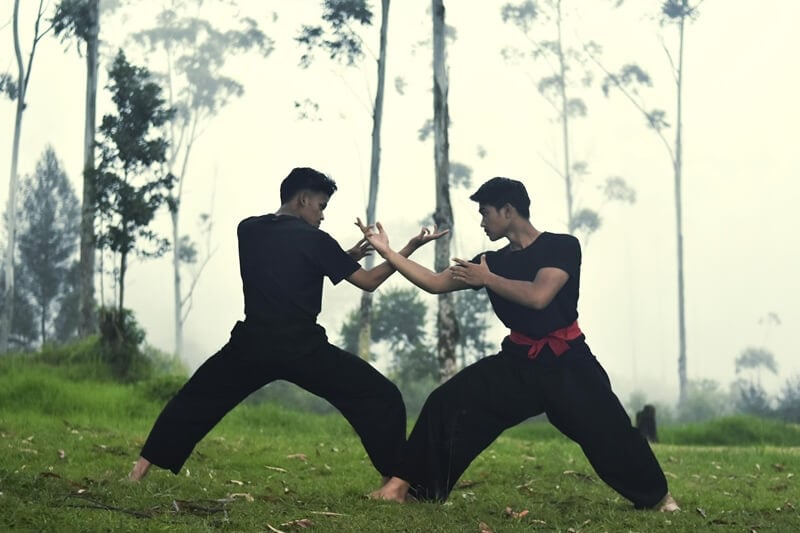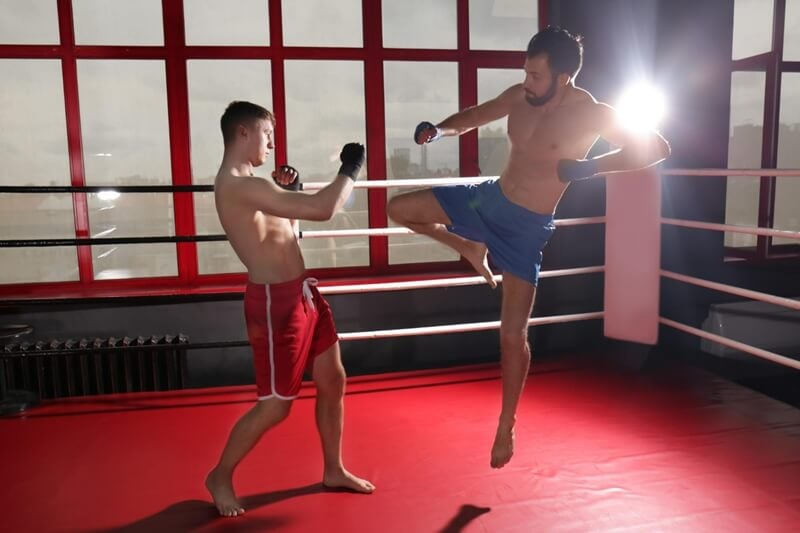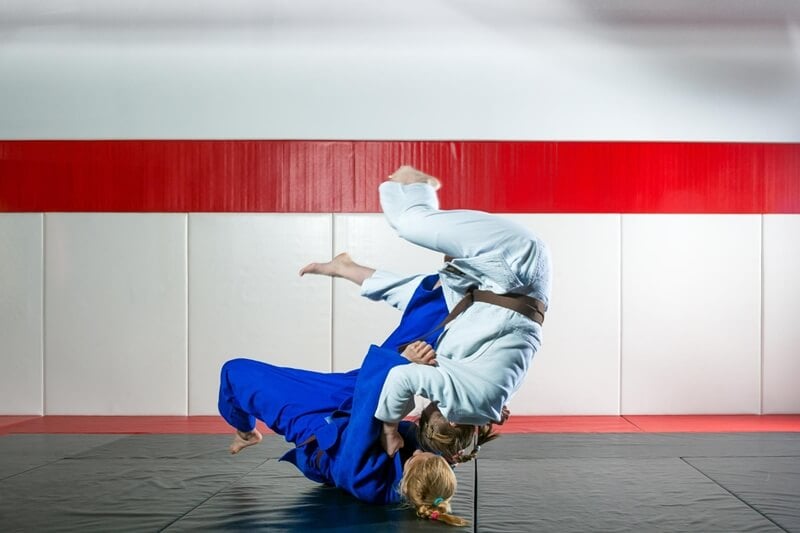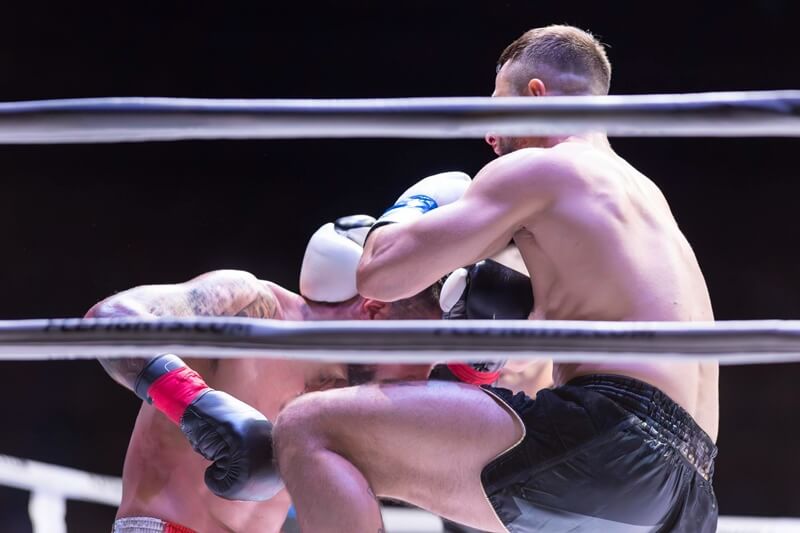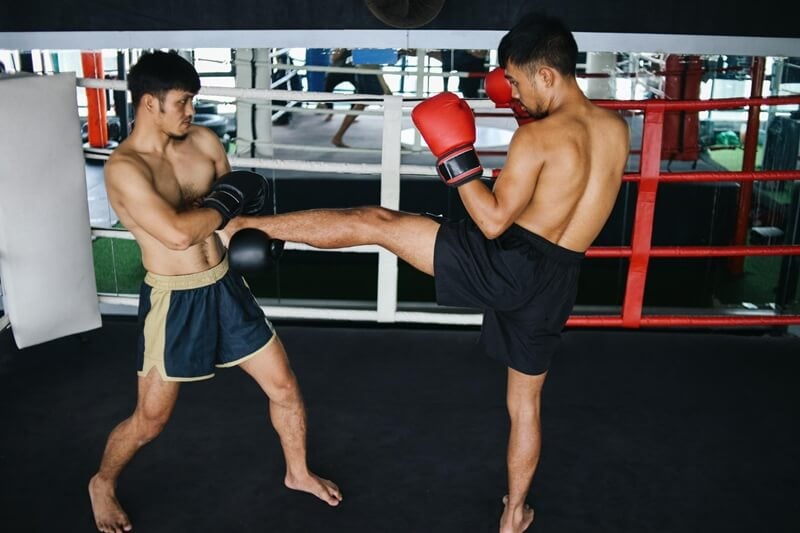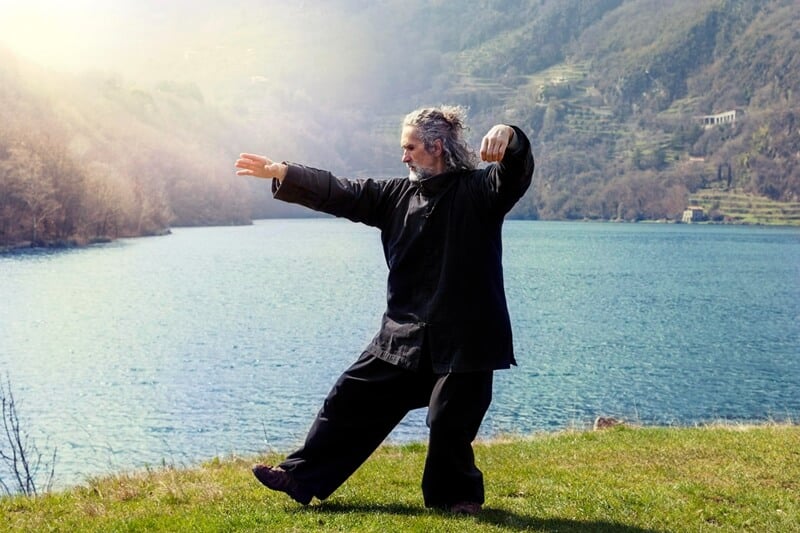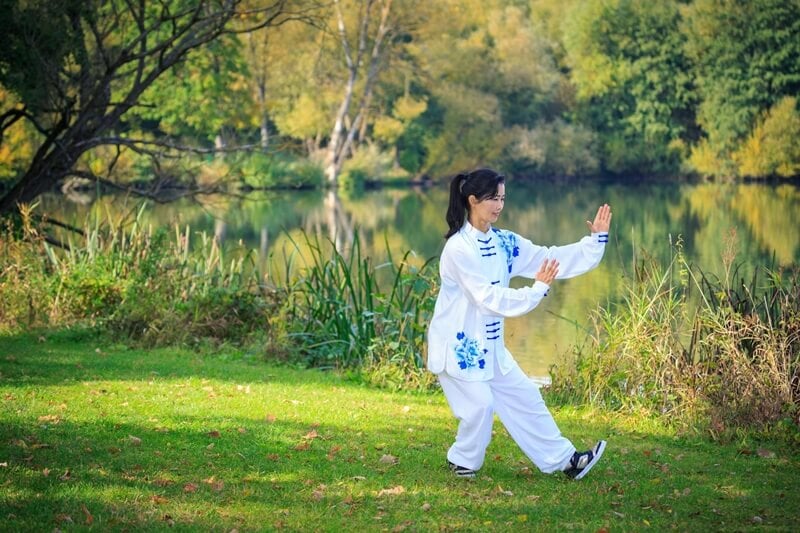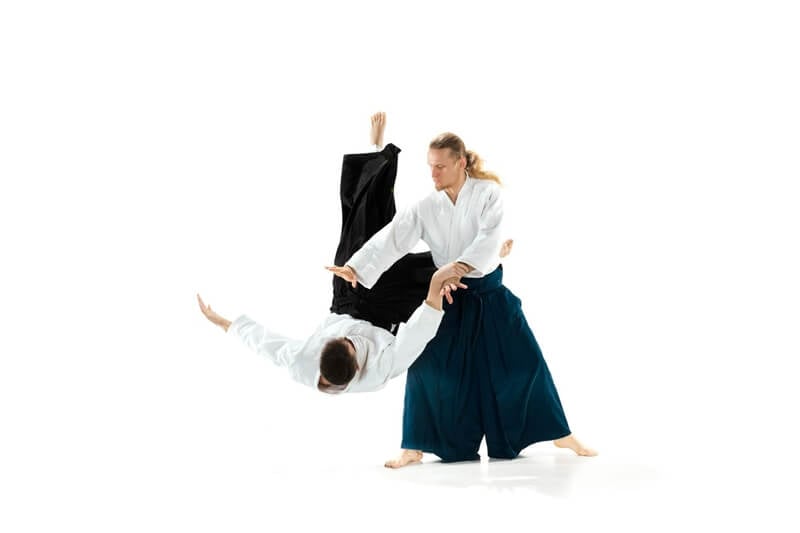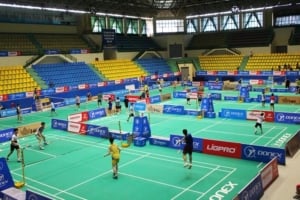With a history of thousands of years of fighting to build and defend the country, martial arts in Vietnam has always been a sport closely associated with life. Practicing martial arts is a way to improve health and self-defense and to construct and protect the nation.
With that martial spirit, Vietnamese people constantly perfect the traditional martial arts that their ancestors left behind from ancient times. At the same time, they are willing to learn and import beautiful modern ones from the world to enrich their skills.
In this article, we will introduce you to 15 martial arts commonly practiced in Vietnam nowadays, including domestic and international martial arts.
A. The domestic martial arts of Vietnam
1. Traditional Vietnamese martial arts
We chose to mention traditional Vietnamese martial arts first because the locals created it. This one has the most extended history of formation and development and is closely associated with the nation’s work of building and defending the country.
According to historical records, as soon as the Hung Kings founded the country, the King built a government apparatus with both civil and military officials. The military officials at this time had the task of overseeing military affairs and security. At the same time, they continuously recruited young, solid men to practice martial arts techniques and how to use weapons such as knives, bows, crossbows, axes, spears, lances, and javelins.
The martial arts techniques practiced and used at this time were required to fulfill the needs of actual combat. They were suitable for the Vietnamese physique, as well as the terrain and weather conditions of Vietnam. Through the development process of history, traditional martial arts have continuously developed and perfected themselves.
At the same time, as quality improved, different traditional martial arts schools gradually formed. Based on the foundation of basic moves and weapons, each school will create its pieces with practical combat value.
This development has helped Vietnamese traditional martial arts firmly affirm their position. Over thousands of years, their quintessence has been passed down and maintained, maintaining their beauty.
Up to now, the traditional martial arts have completed a set of teachings with whole educational and humanistic meaning, including:
- martial arts theory,
- martial arts ceremony,
- martial arts morality,
- royal martial arts (advanced martial arts moves used in imperial examinations),
- martial arts battle (martial arts for battle),
- martial arts exam (low-level martial arts moves for examinations),
- martial arts medicine (martial arts used to treat diseases),
- martial arts music (martial arts drums),
- martial arts temples (including architectural works to worship martial arts masters), and
- martial arts uniforms.
The highlight of this traditional martial art is the uniforms for students, which are made of black fabric, round neck, buttoned, with a circular logo on the left chest, elastic waist pants, and belts.
Belt ranks are determined in order: black belt, green belt, yellow belt (yellow belt), red belt, and the highest level is white belt. Each belt rank is divided into plain belts, belts with 1 stripe – first degree, belts with 2 stripes – second degree, belts with 3 stripes – third degree.
Those who achieve the red belt level, a third-degree red belt with three stripes, are recognized as the standard of martial arts masters. Those who reach the white belt level are awarded the title of martial arts master. Senior martial artists wear a white belt with five stripes of black, blue, yellow, red, and white, like the five elements in the universe.
2. Wrestling
There are still many different debates about whether wrestling is considered a martial art. For example, the International Olympic Committee (IOC) does not accept wrestling as a martial art. Meanwhile, the International Wrestling Federation (UWW) affirms that wrestling is a correct martial art.
Regardless of the debate, wrestling is considered one of the martial arts with the oldest history for the Vietnamese. Historical documents confirm that from the years 40 – 43 (the first century), the female generals Trung Trac and Trung Nhi used wrestling to recruit and train soldiers.
To this day, wrestling still exists in Vietnam as a beautiful sport with a strong cultural imprint. It is also a subject that is put into professional practice to participate in tournaments in the regional and international arena.
3. Viet Vo Dao or Vovinam
Compared to the two traditional martial arts and wrestling, Vovinam was born much later. Accordingly, in 1936, the late Grandmaster Nguyen Loc, Founder, combined the moves of traditional martial arts and wrestling, along with his creativity and innovation, to give birth to the Vietnamese martial arts school.
The leading spirit that Master Nguyen Loc wanted to instill in the Vovinam sect was the “Mind and Body Revolution”. That is, every martial artist needs always to cultivate, develop, and renew their knowledge and techniques. At the same time, they need to improve both physically and mentally.
In 1938, Vovinam was introduced to be widely taught to martial artists. Since then, it has continuously expanded and has been widely accepted and practiced by the people.
The Vovinam Federation was established in 2007. In 2008, the World Vovinam Federation (WVVF) was launched. In 2009, the Asian Vovinam Federation (AVF) was established. In 2010, the European Vovinam Federation was born.
In 2011, Vovinam was officially included in the 26th SEA Games held in Indonesia for the first time.
The uniform for Vovinam martial artists is blue, and the shirt and belt are sewn into two flaps. On the left chest is a circular badge that clearly states “Viet Vo Dao or Vovinam.”
The belt is divided into levels: Ocean Blue, Dark Blue, Yellow, and Red, with the highest level being White.
Up to now, Vovinam has attracted a large number of students to practice and compete and has become one of the most prominent martial arts in the country. At the same time, Vovinam is also taught and practiced in more than 70 different countries around the world.
B. International Martial Arts in Vietnam
4. Karate
Karate, also known as Karatedo, is a martial art originating from the Okinawa region of Japan. It has a strong global influence and is loved by many martial arts enthusiasts.
Karate was first introduced in Vietnam in 1947 in Saigon by martial artist Ho Cam Ngac.
Karate includes vital techniques such as kicking, punching, elbowing, kneeing, and using open hands to deliver punches.
The karate uniform is made of white cloth, has two flaps, and is tied with a belt. The belt levels are determined in the following order: white, yellow, light blue, green, dark blue, brown, and black.
However, the division of belt colors is different between different schools. In addition to the white belt for beginners and the black belt for the highest level, the belt levels in between vary depending on each school.
5. Taekwondo
Taekwondo is the national martial art of Korea. It mainly uses hand and foot strikes. The technique of launching Taekwondo kicks is unique and powerful.
Practitioners of this discipline require considerable flexibility, agility, and body skill. In addition to physical training, taekwondo emphasizes mental exercise and the philosophies of honesty, respect, patience, humility, and self-control.
Taekwondo martial arts uniforms are white, with two flaps and a belt. This discipline is divided into six belt levels: white, yellow, green, blue, red, and black. The lowest level is the white belt, and the highest is the black belt.
Taekwondo was introduced to practice in Vietnam in 1962, with the first facility in Saigon. In 1996, the Vietnam Taekwondo Federation was launched and became a member of the World Taekwondo Federation. Today, taekwondo has developed widely throughout the country and received much love from practitioners.
6. Pencak Silat
Originating from Indonesia, the martial art of Pencak Silat was introduced to Vietnam in 1989, right after the 15th SEA Games. Although it is still relatively new compared to other martial arts, Pencak Silat has quickly become a solid sect, bringing many medals and achievements to Vietnam in regional and international tournaments.
The beauty of Pencak Silat lies in the skillful combination of self-defense and counterattack moves. Right after the dodge moves are beautiful counterattack moves. Achieving this requires the practitioner to be flexible, agile, and resilient and know how to combine the moves smoothly.
In addition to using attacks with hands and feet, such as kicking, punching, dodging, spinning, and clamping, Pencak Silat also emphasizes the technique of using weapons, such as knives, swords, sticks, ropes, and even hidden weapons.
Its uniform is black, with a stand-up collar and a belt. The belt system in Vietnam is quite similar to that of traditional Vietnamese martial arts. It includes five belt levels: black, blue, yellow, red, and white.
7. Boxing
Boxing, a martial art whose main strength is the mighty fists of Europeans and Americans, was introduced to Vietnam quite early, in the 1920s. As soon as it entered Vietnam, boxing won the sympathy of sports enthusiasts.
There were long periods when this sport had an attraction on par with the king sport of football. In every boxing match, there was always a large number of spectators surrounding the stages in many circles.
However, for some unexpected reasons, all boxing activities in Vietnam were banned continuously for eight years, from 1994 to 2002. As soon as the government allowed them to resume in 2002, boxing quickly won the hearts of enthusiasts.
Boxing is practiced widely in Vietnam. Its players are mainly young people, and men account for a more significant proportion than women. In addition, a large number of children whose parents let them practice this sport as soon as they are eligible to help their children practice health and flexibility.
The development of Vietnamese boxing is also shown through many achievements that boxers have achieved at regional and world tournaments, the ASIAD, and the World Olympics.
8. Kickboxing
Initiated in Japan, kickboxing is the result of a combination of boxing, Muay Thai, and Karate. Boxing and Muay Thai are the two prominent marks that make up the sport of kickboxing.
This sport came to Vietnam in 2009, relatively late compared to other martial arts and the history of kickboxing development in the world. But based on its superiority, kickboxing quickly penetrated every corner of Vietnamese martial arts life.
Kickboxing’s outstanding features include the excitement of boxing while also containing the flexibility of kicking. It is suitable for Vietnamese people, who are used to using both hand and foot attacks in traditional martial arts.
In Vietnam, kickboxing clubs are often established alongside boxing and MMA clubs. Kickboxing seems to attract more women and children to practice than regular boxing.
9. Judo
Judo is a beautiful martial art that reflects many of the Japanese’s humanistic values. Even the name “ju,” meaning gentle, and “do,” meaning “way,” shows this.
Thus, “Judo” can be understood as using gentle fighting techniques, using softness to overcome hardness. This discipline mainly revolves around hand and foot attacks such as pressing, knocking down, strangling, and locking hands and feet. At the same time, absolutely no weapons are used in practice or to attack the opponent.
Therefore, Judo is relatively safe for practitioners of all genders and ages. That characteristic has helped it become a lovely martial art loved by many people.
Judo entered Vietnam in the 40s of the 20th century. Judo students wear white or blue uniforms. The shirt is sewn into two flaps and tied with a belt.
The belt is divided into seven colors corresponding to seven levels from low to high, including white, yellow, orange, green, blue, brown, and black.
10. MMA
The term MMA—Mixed Martial Arts— first appeared in the Los Angeles Times in 1993, in an analysis by Howard Rosenberg. But this is not when MMA was born.
MMA is understood as a free martial art that allows fighters to use all their strong skills from many different martial arts to win. From this understanding, it can be seen that MMA appeared in ancient Greek civilization. It included fights between fighters from many other martial arts schools.
However, it was not until 1993, when the Ultimate Fighting Championship (UFC) was founded, that MMA became widely popular worldwide. Along with that are specific rules and regulations for a match.
Regardless, MMA has a long history of appearance and rapid development worldwide. In Vietnam, the MMA Federation—VMMAF—was only officially established in May 2020. After 18 months of its launch, the first free martial arts tournament was held.
Although this infancy is entirely contrary to the love that martial arts enthusiasts in Vietnam have for MMA, its clubs quickly appeared everywhere.
In some traditional martial arts clubs, boxing, kickboxing, and Muay Thai, MMA is also present and is ready for tournaments. Vietnamese MMA is expected to enter the regional and international arenas in the near future and bring medals to the country’s sports.
11. Muay Thai
Muay Thai is an excellent source of pride for Thailand, and its history dates back to 2000 years. This martial art is compelling, fast, dangerous, and highly harsh.
With the goal of defeating the opponent as quickly as possible, Muay Thai allows players to use “eight limbs” to attack, including legs, arms, elbows, and knees. This feature makes Muay Thai attacks extremely damaging.
However, focusing too much on attack has made defense a significant weakness of Muay Thai.
Because of its harshness, this martial art requires practitioners to have good health, high flexibility, and the ability to withstand strong blows. In addition, hard training is an indispensable element for every martial artist when studying it.
Muay Thai was introduced in Vietnam in the 1990s. This discipline is often present in boxing, MMA, and kickboxing clubs.
Although this is a powerful and effective martial art, its lethality and harshness make Vietnamese martial arts lovers favor Muay Thai less.
12. Tai Chi
Originating from China, Tai Chi has existed for about 300-400 years. This martial art is built on the principle of yin and yang and the five elements of feng-shui skills. The most apparent characteristic of Tai Chi is the graceful, slow moves combined with the regulation of breathing and airflow.
The basic philosophy of Tai Chi is using softness to overcome hardness, slowness to overcome speed, and stillness to overcome movement. It uses intention, not force, so the movements are continuous and uninterrupted. Relax the body to harmonize with the flow of energy to create strength.
According to many unclear historical documents, Tai Chi came to Vietnam in the early years of the 20th century. Two different hypotheses about the path of introduction exist, including the path following the footsteps of the Chinese immigrant community. The second hypothesis is that Chinese martial artists came to Vietnam to establish martial arts schools, recruit students, and improve them.
Regardless of when or where it was introduced, Tai Chi is a beautiful and valuable martial art for Vietnamese people nowadays. Many locals, irrespective of gender or age, practice Tai Chi every day. They consider it a practical martial art for training their body and mind.
13. Wing Chun
This famous martial art originated in China and left a strong impression on the world martial arts scene with Bruce Lee’s image. Bruce Lee’s invincibility as a martial arts talent is a strong affirmation of Wing Chun’s value.
Wing Chun does not have many hand and weapon lessons and does not have many beautiful and complicated punches. The critical point of Wing Chun lies in the practitioner’s intention, which becomes the move, so this martial art has a very high level of flexibility and creativity.
Wing Chun is also similar to Tai Chi in that it emphasizes the principle of using softness to overcome hardness, using stillness to overcome movement, and highlighting the flexibility and speed of attacks. In addition, Wing Chun is famous for its exercises on wooden dummies.
Wing Chun was introduced to Vietnam in the early years of the 20th century. Many people believe that Master Nguyen Te Cong is the founder of Vietnamese Wing Chun. In the 1930s, he founded a martial arts school and taught this discipline to Vietnamese students.
Over time, Wing Chun has gradually affirmed its position in the community. Currently, thousands of students practice this martial art across the country because it helps them train their physical, mental, and spiritual health, making them supple and flexible.
14. Wushu
Wushu is a modern Chinese martial art that is considered the most typical embodiment of the quintessence of Chinese martial arts. This is because Wushu was born from the synthesis of the quintessence of traditional martial arts of this country, such as Shaolin, Nga Mi, Wudang, Tai Chi, and Wing Chun.
From that starting point, Wushu became an excellent sport, including both bare-handed and weapon-based forms. In addition to its performance value, it also demonstrates strong resistance through punching, kicking, locking, squeezing, and knocking down.
In Vietnam, Wushu began to join in 1989, thanks to the efforts of martial artist Hoang Vinh Giang. By 1993, after only a few short years, Vietnamese Wushu had won the first medals, including gold, silver, and bronze, at the World Wushu Championship.
Notable names in the Vietnamese wushu community include Nguyen Thuy Hien, Duong Thuy Vi, Dam Thanh Xuan, Nguyen Mai Phuong, and Vu Tra My.
Currently, Wushu is the “golden mine” for Vietnamese sports in regional and international tournaments.
15. Aikido
Aikido is a modern Japanese martial art founded by master Ueshiba Morihei. Ueshiba’s primary purpose when founding this martial art was to help practitioners have the ability to defend against attacks. At the same time, this defense must aim to protect the opponent from injury.
This mindset makes Aikido rich in love or humanity. Therefore, its main moves revolve around throwing and locking techniques.
Aikido is also a rare martial art that does not have competitive tournaments. Instead, students will practice both physically and mentally to achieve patience, find harmony to resolve conflicts and limit the occurrence of disputes.
Aikido was introduced to Vietnam in 1958 and then spread throughout the country. Martial artist Dang Van Phat was the first to contribute to its transmission in Vietnam.
Today, many Vietnamese people love Aikido because of its noble humanity. Practicing Aikido is not only for self-defense; it also helps students improve their health, both physically and mentally. Students strengthen their ability to connect in the community and train themselves to love more and more.

